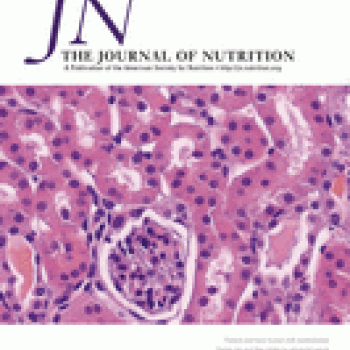Publication Information

Background: It is unclear what effects a conditional cash transfer (CCT) program would have on child anthropometry, language development, or school achievement in the context of the nutrition transition experienced by many low- and middle-income countries.
Objective: We estimated the association of participation in Peru's Juntos CCT with anthropometry, language development, and school achievement among children aged 7-8 y.
Methods: We used data from the Young Lives cohort study, a cohort born between 2001 and 2002. We estimated associations of the Juntos program with height-for-age z score (HAZ), body mass index?for?age z score (BAZ), stunting, and overweight at age 7?8 y separately for children participating in the program for ?2 y (n = 169) and children participating for <2 y (n = 188). We then estimated associations with receptive vocabulary and grade achievement among children who had been assessed at age 4?6 y before enrollment in Juntos (n = 243). We identified control subjects using propensity score matching and conducted difference-in-differences comparisons.
Results: Juntos participation was associated with increases in HAZ among boys participating for ?2 y [average effect of treatment among the treated (ATT): 0.43; 95% CI: 0.09, 0.77; P = 0.01] and for boys participating for <2 y (ATT: 0.52; 95% CI: 0.23, 0.80; P < 0.01). Among girls participating in the program for ?2 y, BAZ declined (ATT: ?0.60; 95% CI: ?1.00, ?0.21; P < 0.01) as did the prevalence of overweight (ATT: ?22.0 percentage points; 95% CI: ?42.5, ?2.7 percentage points; P = 0.03). We observed no significant associations of Juntos participation with receptive vocabulary or grade attainment.
Conclusions: CCT program participation in Peru was associated with better linear growth among boys and decreased BAZ among girls, highlighting that a large-scale poverty-alleviation intervention may influence anthropometric outcomes in the context of the nutrition transition.
ReferenceChristopher T. Andersen, Sarah A. Reynolds, Jere R. Behrman, Benjamin T. Crookston, Kirk A. Dearden, Javier Escobal, Subha Mani, Alan Sánchez, Aryeh D. Stein, Lia C.H. Fernald (2015) 'Participation in the Juntos Conditional Cash Transfer Program in Peru Is Associated with Changes in Child Anthropometric Status but Not Language Development or School Achievement', The Journal of Nutrition 145(8): 1942-1949, early online publication August 2015, doi: 10.3945/jn.115.213546

Background: It is unclear what effects a conditional cash transfer (CCT) program would have on child anthropometry, language development, or school achievement in the context of the nutrition transition experienced by many low- and middle-income countries.
Objective: We estimated the association of participation in Peru's Juntos CCT with anthropometry, language development, and school achievement among children aged 7-8 y.
Methods: We used data from the Young Lives cohort study, a cohort born between 2001 and 2002. We estimated associations of the Juntos program with height-for-age z score (HAZ), body mass index?for?age z score (BAZ), stunting, and overweight at age 7?8 y separately for children participating in the program for ?2 y (n = 169) and children participating for <2 y (n = 188). We then estimated associations with receptive vocabulary and grade achievement among children who had been assessed at age 4?6 y before enrollment in Juntos (n = 243). We identified control subjects using propensity score matching and conducted difference-in-differences comparisons.
Results: Juntos participation was associated with increases in HAZ among boys participating for ?2 y [average effect of treatment among the treated (ATT): 0.43; 95% CI: 0.09, 0.77; P = 0.01] and for boys participating for <2 y (ATT: 0.52; 95% CI: 0.23, 0.80; P < 0.01). Among girls participating in the program for ?2 y, BAZ declined (ATT: ?0.60; 95% CI: ?1.00, ?0.21; P < 0.01) as did the prevalence of overweight (ATT: ?22.0 percentage points; 95% CI: ?42.5, ?2.7 percentage points; P = 0.03). We observed no significant associations of Juntos participation with receptive vocabulary or grade attainment.
Conclusions: CCT program participation in Peru was associated with better linear growth among boys and decreased BAZ among girls, highlighting that a large-scale poverty-alleviation intervention may influence anthropometric outcomes in the context of the nutrition transition.
ReferenceChristopher T. Andersen, Sarah A. Reynolds, Jere R. Behrman, Benjamin T. Crookston, Kirk A. Dearden, Javier Escobal, Subha Mani, Alan Sánchez, Aryeh D. Stein, Lia C.H. Fernald (2015) 'Participation in the Juntos Conditional Cash Transfer Program in Peru Is Associated with Changes in Child Anthropometric Status but Not Language Development or School Achievement', The Journal of Nutrition 145(8): 1942-1949, early online publication August 2015, doi: 10.3945/jn.115.213546

